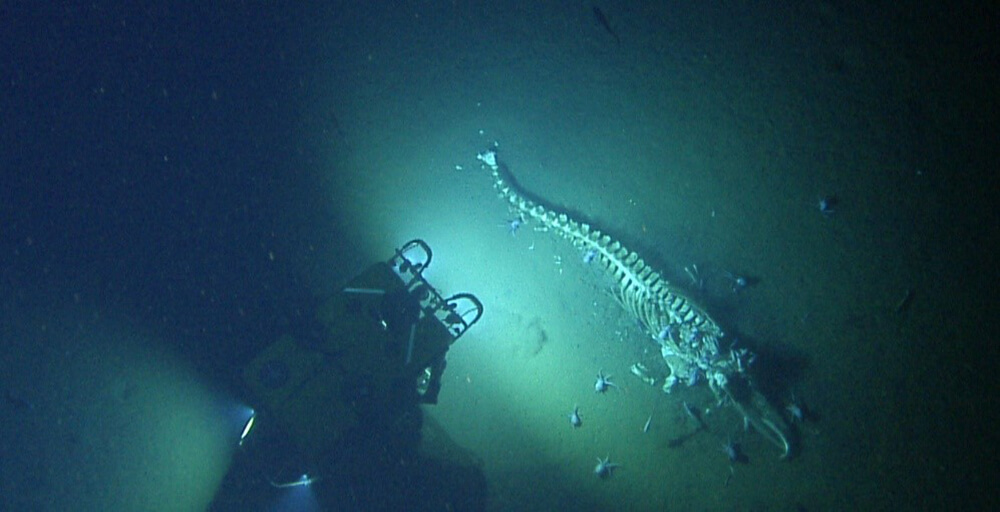Exploration, Characterization, and Monitoring of Deep-sea Benthic Habitats

Conservation Issue
Protection of Monterey Bay National Marine Sanctuary (MBNMS) resources requires improved understanding of deep-sea corals, sponges, and benthic habitats. Little is known about the diversity and distribution of deep-sea biogenic habitats, such as soft sediment communities and structure-forming deep-sea corals and sponges, as well as the communities that rely on them. Structure-forming invertebrates significantly increase seafloor diversity and provide essential habitat for commercially fished species that are vulnerable to bottom contact fishing gear, marine debris, oil spills, increasing temperatures, and ocean acidification. Information on the distribution, abundance, status, and trends of these sensitive marine resources will better inform sanctuary management.
Description
Although the deep sea encompasses 98% of all living space on the planet by volume, it is among the least understood ecosystems because of the challenges inherent in accessing it. Marine scientists claim that we know more about space than we do about this remote environment. Based on the topography of the seafloor, the deep sea begins at the continental shelf break, at a depth of approximately 200 meters. Beyond the shelf break, the continental slope descends through the deep sea to the ocean floor. Of the total seafloor area in MBNMS, approximately two-thirds (9,164 square kilometers) is located in the deep sea.
Deep-sea coral and sponge assemblages are particularly vulnerable to both physical disturbances and environmental change due to their slow growth, limited ability to adapt physiologically, and fragile structure. Even though these environments are deep, typically stable, and cooler than surface waters, changing ocean conditions may drastically alter deep-sea conditions and therefore adversely affect species with low tolerances to changes in abiotic conditions. Mobile species, like fishes and invertebrates, are also likely to respond to changing conditions and biogenic habitat, altering overall benthic biodiversity in the deep sea. Because there is little information available on the distribution, species composition, and condition of these habitats, the extent to which they overlap with potentially harmful human activities, and the rate at/magnitude to which deep-water environments are changing, sanctuary managers are unable to adequately track and conserve sensitive deep-sea habitats, such as deep-sea coral and sponge assemblages.
Data and Analysis Needs
- Distribution of deep-sea benthic habitat types and validation of seafloor mapping data
- Exploration and assessment of deep-sea coral and sponge resources with emphasis on areas of sanctuary resource protection and management concerns
- Visual surveys within marine protected areas (MPAs) and recently modified Essential Fish Habitat Conservation Areas (EFHCAs; e.g., closures) to better understand the occurrence of deep-sea corals and sponges
- Identification of deep benthic communities that are biodiversity hotspots, as well as those most at risk from human-induced disturbances and changing ocean conditions
- Patterns of human activity in the sanctuary and the extent of overlap between potentially harmful activities and known deep-sea coral and sponge distributions
- Information on the response, resilience, and recovery potential of vulnerable benthic habitats following injury due to human disturbance, changing ocean conditions, and/or marine debris
Potential Products
- Maps (interactive) of physical and biological deep-sea habitat types within MBNMS, as well as distributions of relevant human activities
- A comprehensive inventory of field expeditions, data acquisitions, and data analyses
- Image library of representative habitats and human impacts to support education and outreach
- Characterization of deep-sea coral and sponge habitats, including MPAs and EFHCAs
- Characterization and quantification of organisms using corals and sponges as habitat

A colorful collage of some of the incredible sights from remotely operated vehicle dives on Sur Ridge, including more than 10 species of coral, many different sponges, two blob sculpins, nudibranchs, brooding octopus, and dozens of other cnidarians, all on a landscape of ever-changing and diverse habitat. Photos: MBARI
Supplementary Information
Monterey Bay National Marine Sanctuary Management Plan (particularly Davidson Seamount, Research and Monitoring, and Resource Protection action plans)
West Coast Deep-Sea Coral Initiative Science Plan (2018–2021)
For more information about this assessment, contact Erica.Burton@noaa.gov.

